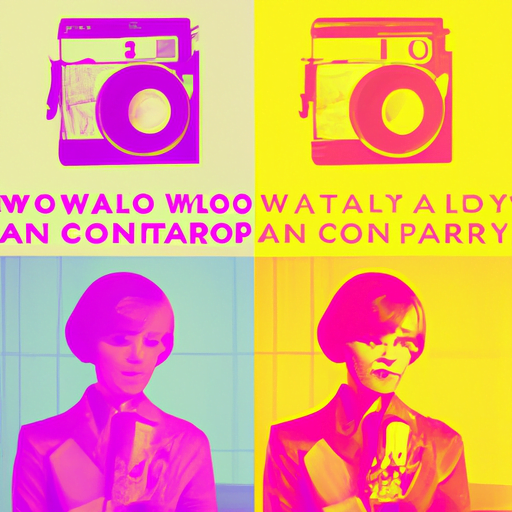
-
Table of Contents
Exploring Retro and Vintage Design Revivals

Design trends are constantly evolving, with new styles and aesthetics emerging and fading away. However, one trend that has stood the test of time is the revival of retro and vintage design. From fashion to interior design, this nostalgic aesthetic has captured the imagination of designers and consumers alike. In this article, we will delve into the world of retro and vintage design revivals, exploring their origins, their impact on various industries, and the reasons behind their enduring popularity.
The Origins of Retro and Vintage Design
The terms “retro” and “vintage” are often used interchangeably, but they have distinct meanings. Retro refers to a style that imitates or pays homage to trends and designs from the past, particularly those from the mid-20th century. On the other hand, vintage refers to items that are at least 20 years old and have a certain historical value.
The revival of retro and vintage design can be traced back to the 1960s and 1970s, when there was a renewed interest in the aesthetics of the past. This was a time of cultural and social change, and people sought solace in the familiar and comforting designs of earlier decades. The popularity of retro and vintage design continued to grow in the following decades, with periodic revivals in the 1980s, 1990s, and early 2000s.
The Impact on Fashion
One industry that has been greatly influenced by the retro and vintage design revival is fashion. Designers often draw inspiration from past eras, reinterpreting and modernizing classic styles. For example, the 1950s silhouette with its cinched waist and full skirt has made a comeback in recent years, with many designers incorporating this iconic shape into their collections.
Brands like Gucci and Prada have embraced retro and vintage design, creating collections that pay homage to the past while adding a contemporary twist. This blending of old and new has resonated with consumers, who are drawn to the nostalgia and uniqueness of retro and vintage-inspired fashion.
The Influence on Interior Design
Interior design is another field where retro and vintage design revivals have made a significant impact. Mid-century modern design, characterized by clean lines, organic shapes, and a focus on functionality, has experienced a resurgence in popularity. Furniture and decor from the 1950s and 1960s are highly sought after, with many people incorporating these pieces into their homes.
The appeal of retro and vintage design in interior spaces lies in its ability to create a sense of nostalgia and warmth. Vintage-inspired wallpaper, retro appliances, and mid-century furniture can transform a space, giving it a unique and timeless charm. This trend has been embraced by both homeowners and businesses, with retro-themed cafes, bars, and hotels popping up around the world.
The Reasons Behind the Enduring Popularity
So, what is it about retro and vintage design that continues to captivate us? There are several factors that contribute to its enduring popularity:
- Nostalgia: Retro and vintage design evoke feelings of nostalgia, reminding us of simpler times and cherished memories. This emotional connection is a powerful draw for many people.
- Uniqueness: In a world saturated with mass-produced goods, retro and vintage design offers a sense of individuality. Owning a vintage piece or wearing a retro-inspired outfit allows us to stand out from the crowd.
- Timelessness: Good design is timeless, and retro and vintage design have proven their longevity. The fact that these styles have endured for decades is a testament to their enduring appeal.
- Sustainability: With growing concerns about the environmental impact of fast fashion and disposable consumer goods, retro and vintage design offers a more sustainable alternative. By repurposing and reusing old items, we can reduce waste and contribute to a more circular economy.
Case Studies: Successful Retro and Vintage Design Revivals
Several brands and companies have successfully tapped into the retro and vintage design trend, revitalizing their image and attracting new customers. Let’s take a look at a few notable case studies:
1. Coca-Cola
Coca-Cola, the iconic beverage brand, has a long history of incorporating retro and vintage design elements into its marketing campaigns. From its classic glass bottles to its vintage-inspired advertisements, Coca-Cola has successfully leveraged nostalgia to create a sense of authenticity and timelessness.
2. Levi’s
Levi’s, the renowned denim brand, has embraced its heritage by reintroducing classic styles from its archives. The Levi’s Vintage Clothing line offers faithful reproductions of iconic pieces from the past, appealing to both collectors and fashion enthusiasts who appreciate the brand’s rich history.
3. Instagram
Even in the digital realm, retro and vintage design has found a place. Instagram, the popular photo-sharing app, introduced filters that mimic the look of old film cameras, adding a nostalgic touch to users’ photos. This simple feature became a defining characteristic of the app and contributed to its rapid rise in popularity.
Summary
The revival of retro and vintage design has had a profound impact on various industries, from fashion to interior design. The nostalgia, uniqueness, timelessness, and sustainability of retro and vintage design have contributed to its enduring popularity. Brands like Coca-Cola, Levi’s, and Instagram have successfully tapped into this trend, revitalizing their image and attracting new customers. As we continue to navigate an ever-changing design landscape, it is clear that retro and vintage design will remain a timeless and influential aesthetic.
